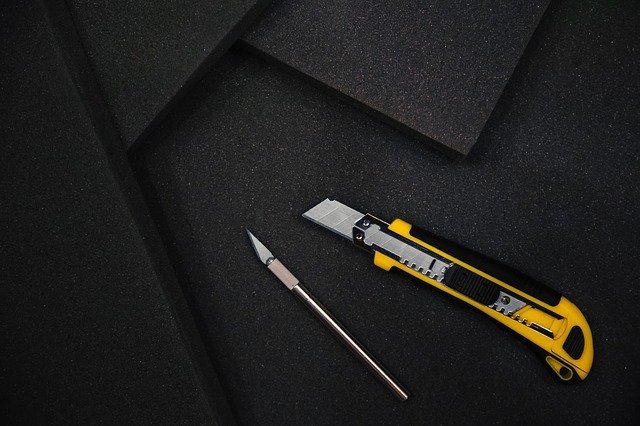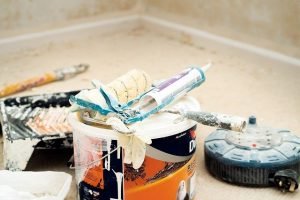
When it’s time to fix your plumbing, you might wonder where to start, equipment, what equipment to buy and what rules to follow. The tips laid out here can help you realize what you need to be a better plumber.
If you possess pipes that are alive with the sound of squeaking or hammering, you have an issue that is easily corrected. What you will have to do is anchor any pipes that are exposed. Pipes that are contained within the floors, walls and ceilings may need to be attended by a professional plumber.
If a water pipe freezes, turn on a nearby faucet so that thawed ice has a place to go. This can prevent damage to your house because it lets the pressure that is in the pipe out, which could prevent a big mess in your home.
To keep your pipes from freezing in the winter, insulate all exterior pipes and be sure to keep your interior house temperature above freezing, even if the house is vacant. Obviously, if it is below freezing outdoors, the pipes will be subjected to the same temperatures. It can take a while for the pipes to thaw, which means you will not be able to run water for quite some time. The worst case would be that they burst, creating water damage and a big repair bill.
Knowing what tools and how to use them will make you much better at plumbing. Before undertaking repairs on your own, you should have a plan; otherwise, or you may make a costly mistake.
Wait to give compensation to a plumber until they are finished with their work. Sometimes plumbers will request a cash deposit before any work can commence; however, you avoid paying the total bill until the whole job has been finished to your satisfaction. Agree with the plumber in advance on the job and payment.
Don’t use any colored tablets in your toilet.These products may well remove odors, but they can seriously damage the rubber pieces in the toilet, which can prevent your toilet from functioning correctly.
While various toilet tablets and odor removers may be tempting, it’s best not to use them in your toilet. These products may well remove odors, but they have the side effect of damaging the rubber in your toilet, which can prevent your toilet from functioning correctly.
Use filters on all drains to keep foreign objects and debris from getting through. The ones in the bathroom can be cleaned out on a regular basis.
If you have a clogged toilet and a plunger is not helping to clear the blockage, if the water level is low, pouring a bucking of boiling water from a height into the toilet bowl could resolve the problem. Repeat this once your water goes back to a lower level.
Don’t put things like fat, grease or fat down the drain. This can make your garbage disposal; fats and oils cause blades to run less efficiently and slow. Make sure you dispose of oils in other places other than the sink.
If you want to look for floor damage around your toilet, just check the flooring for softness. Another great way to check is to actually sit on the toilet and move in a rocking motion, going back and forth from right to left to see how much give you feel. Picking up on any problems now will definitely work to save you money later. It’s the difference in a little maintenance and total floor replacement.
Dish Soap
If your home operates on well water and you notice pink or orange stains in your bathtub and other fixtures, this is no doubt due to iron in the water. Water softener can help this problem, and you can buy that at a store. Alternatively, you can hire someone to handle it.
You can use dish soap, dish soap, and even cherry pits.
Ensure that your sink’s overflow holes are clear. These passages allow your sink to fill up without overflowing onto your floor, and if they’re blocked that can cause you a major headache. Clear the overflow holes periodically when you are doing your periodic checks for other problems and things that need to be repaired.
Pour equal parts baking soda and vinegar down your bathtub drain once a month. Plug up the drain and allow the chemical reaction takes place. Let that sit for a while, then wash it all away with boiling water.This should be able to clear your pipes of hair and soap scum.
Run lots of cold water whenever you use your garbage disposal. When cold water hits the garbage disposal, it sharpens the blades. This keeps the disposal working properly. Avoid using hot water, as this will liquefy grease, causing it to build up in the drain and obstruct your pipes.
Ensure your sink’s overflow holes aren’t clogged up.Clear overflow holes periodically when you are doing periodic checks for other problems and plumbing issues that should be addressed.
Don’t use your toilet like a trash can, and you minimize potential problems. Don’t put disposable sanitary objects down the toilet. The sewage system cannot deal with these items and will become clogged. As well, keep your toilet paper usage to as little as possible.
Don’t flush anything that is unlikely to dissolve and wind up clogging pipes, sanitary napkins, diapers or cotton balls, because these items don’t break down and may cause clogging issues.
Clean the aerator to adjust water pressure issues which result from sediment build up. To clean the aerator, you first want to disassemble the faucet and remove it. After that, remove the aerator and scrub it clean with a fine brush. You can use vinegar or some other type of cleaning solution to assist in the task. Rinse the piece, put it back together, and put it back on the faucet. By removing any grit, grime and debris from the aerator, the water pressure should significantly increase.
Lint Trap
To extend the life of your pipes, try to stay away from drain cleaners if you can. The chemicals in these type of cleaners are corrosive, and they could damage your pipes by using them too much. Instead, if you find your drain is blocked up, look at hiring a professional to come out and look at it to see what the problem is.
Be sure to check your dryer and clear your lint trap is clean. This will help your dryer operates efficiently and prevents fires. Be sure you inspect your lint trap for tears or holes that could mean lint is going into your pipes, because this can cause bigger problems as it may mean that lint is escaping into your pipes.
There are two ways to remove stubborn clean-out plugs. The first method you can try is using a chisel with a hammer to get the fitting loose. Unfortunately, if you still cannot remove the plug, the only viable option left on the table is to bust right through the plug completely with the hammer and chisel.
The key towards maintaining low plumbing repair bills is to prevent problems before they happen. Clogs are the top reasons for needing a major plumbing issues. Drains easily clogged by hair.It’s a lot easier to take hair that is on a screen than to pull it from a pipe.
Be certain that your toilet does not have a leak. A good tip for this is to take food coloring and put a few drops in your toilet tank. Look at the bowl carefully. If you notice colored water in several seconds, then you know your toilet is leaking badly, and you need to fix this as soon as possible.
The tips above should have helped you understand plumbing better and make it less intimidating. It’s just that there are quite a few basics to learn. All that is needed to start is common sense, effort and research to determine the most efficient way of handling your particular job.
Realize that branch lines can get blocked and cause sewage backups that affect main lines. If you have difficulty removing this blockage, call a company that has special equipment to clear the line, usually a plumber’s snake.



